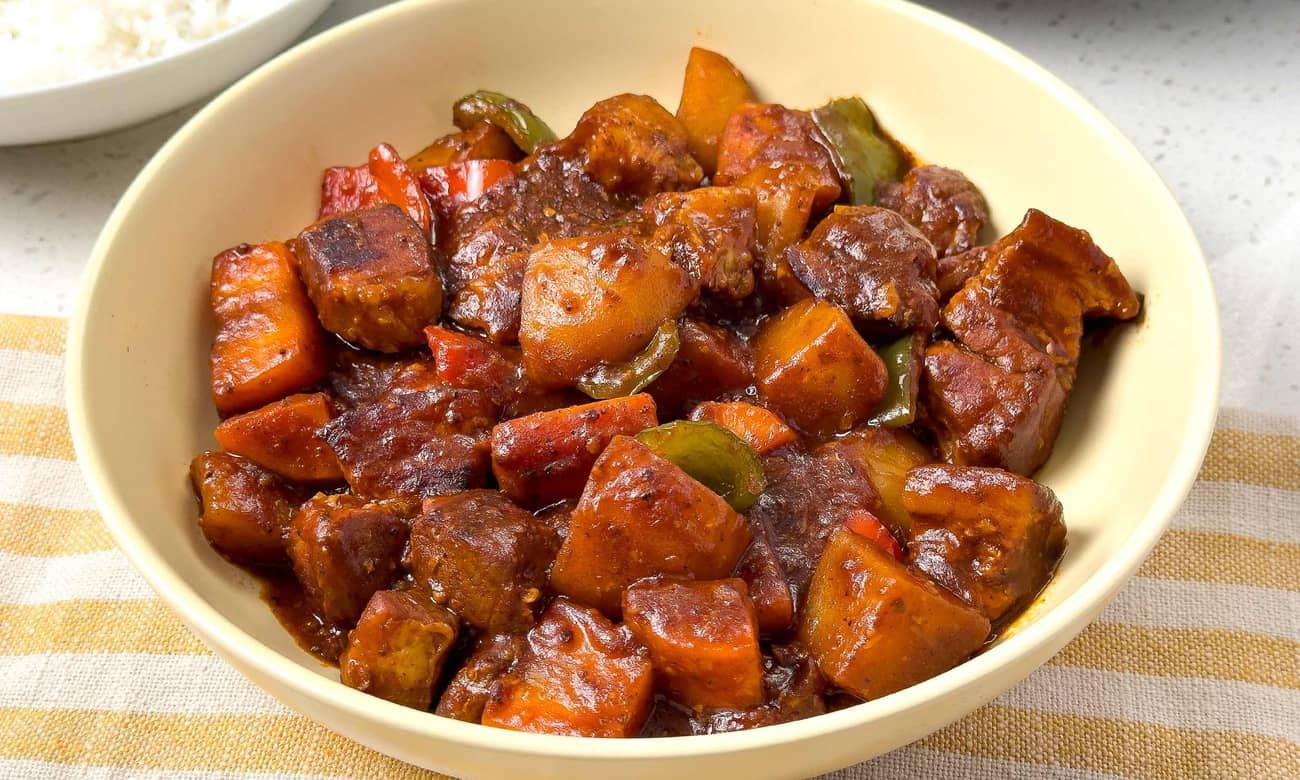
Double-frying makes this sweet and sour pork tender on the inside and extra crunchy on the outside, even after it’s been bathing in sauce.
There's nothing worse than soggy sweet and sour pork. It’s that immaculate balance of crisp batter, juicy pork, and sticky sauce that makes this dish a crowd favorite. But sometimes, you end up with a plate that’s all too soft.
Cooking sweet and sour pork at home ensures that every piece is crisped to perfection. Using cornstarch is one step to achieve this. We like to amp it up by double-frying the pork.
Double-frying forms an earth-shatteringly crisp outer shell that stays crunchy, even under a thick sauce. Start by frying your pork at a lower temperature first, until your meat is just cooked but not yet golden or crispy. Let it rest for a bit while you crank up the heat. You want to fry the pork again, but this time at a higher temperature for less time. This crisps up the pork’s outside without overcooking the inside.
Sweet and sour pork typically has four components:

We don't just copy random recipes. We taste test every single one.
Easily search and save your favorites.
Chefs develop our food with techniques made easy for home cooks.
This recipe makes a basic sweet and sour pork we all know and love. To push it further, you can experiment with different fruits (like lychees or strawberries) and sauces (like tomato paste, Worcestershire sauce, or plum sauce) to taste.
You’ve probably seen Shaoxing wine used in many Chinese recipes. But what is it exactly, and what does it even do?
Shaoxing wine comes from the city of Shaoxing in the Zhejiang province of China. Made from fermenting glutinous rice, it has a dark amber color with a slight sweet taste that’s perfect for cooking and drinking. This is perfect for marinating meats as it eliminates those funky, meaty odors. You can even use it for stir fries or braises when deglazing the bottom of your pan.
Note that not all Chinese cooking wines are automatically Shaoxing wine. Unless it’s specified, then it’s just plain Chinese cooking wine—a saltier, spiced variant of Shaoxing. For this recipe, either will work totally fine. It may be hard to find these cooking wines, so use whatever you can find at your nearest Chinese grocery.
If there’s no Shaoxing wine in stock, don’t panic. Plain soju, mirin, and dry sherry all work exceptionally well. If you’re looking for a non-alcoholic option, you can skip it all together.
